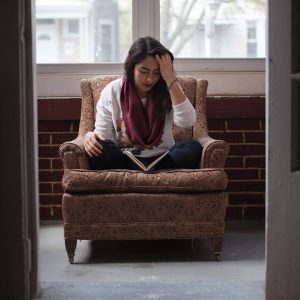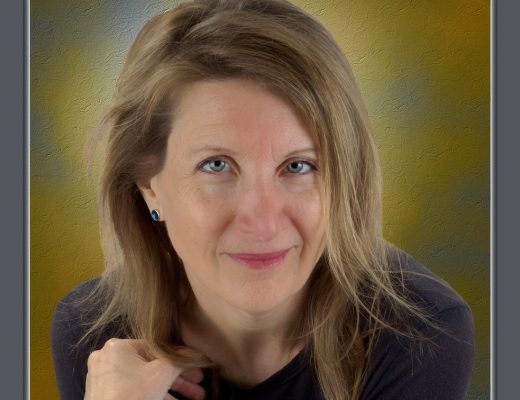 Las Pilas del Tiempo
Las Pilas del Tiempo
The pila of the Laguna Grande sits in a dirt yard outside of a blue cement house located on a plateau in eastern Mexico. It is one of my earliest memories. It is surrounded by small rose bushes, scattered maize, and roaming kittens infested with fleas. This is one of my earliest memories: I must be three years old, small and navigating the vast world of my tio’s huerta with my primas. With our chubby child fingers, we pluck shiny leaves from various trees and tirelessly rub their sticky exteriors against the ridges of the cement washboard in the pila. Our imagination transcends us deep into the magic of the green droplets, glimmering crystal balls that gather and eventually bleed into the wash bin in an estuary.
A blue toy cup—the same shade of blue as my tio’s house—lies in the moistened dirt beneath the cement pila. I snatch it up, carefully brush off the mud crumbs, and scoop up the tea-like water we’ve made after an hour’s worth of wringing out the leaves. My primas find more discarded toy cups lying near the rose bushes and also scoop up our magic potion. We set them in a line on the edge of the pila, from left to right: my blue one with dirt wedged deeply into its creases despite my best efforts, a pink one that is chipped around the rim, and the yellow one that still has dried bird-droppings on one side, but our small marble eyes look at them with wonder and deep satisfaction.
We carry them like secrets, in our now bright green hands, to the dogs sleeping on sacks of salt in the garage—our first “customers” of the day. After the dogs then we go to the mama cats who are licking the fleas off their kittens in the sun by the back door and work our way to the front yard where a fence made of stacked rocks blocks us from the dirt road. Through the gaps in between rocks, we stick out our small hands, still grasping the toy cups, and offer our healing juices to the herds of cows grazing in the plains that stretch out for miles past the small road. They offer us the length of their tongues, wet and coarse on our knuckles, and we jump back laughing until we spill the leaf water all over our shirts—reminders of the enjoyment of our “small business” adventures.
There are two pilas in Atolinga and they are very different, though they sit across the street from each other. One is my neighbor’s and one belongs to my grandparents. My neighbor’s pila sits inside her family’s kitchen next to a stove. On the stovetop, her mother’s copper olla sits tall and stout. From a dry bin in the pila, her mother—Doña Raquel—grabs thick handfuls of pumpkin seeds and tosses them gracefully inside the olla, toasting them until they turn a light shade of brown. We sit on the red plastic chairs by the small kitchen table and listen to the rhythm of their soft song against the heat. The day grows hot and round drops of sweat roll down our impatient faces.
I am a whole year older now—five—to be exact, and Doña Raquel tells her daughter and me that if we want to help her sell seeds in the plaza, we have to wash the dishes, including the olla. Washing the copper olla proves to be difficult, even between the two of us. Brown salt crumbs stick to the bottom of the pila when we are done. But the hoya sits on the washboard side of the pila, where the rest of the dishes dry, and it gives off an iridescent orange light—the same light we will see reflecting from the coins we hold up against the sky between our salted fingers at the end of the day.
My grandparent’s pila can be seen from my neighbor’s pila—that is, if you open the front doors of our houses, as well as the doors to the courtyards that lie in the middle, and angle yourself just right. When I am not inhaling the hot scent of toasted seeds, I am there, across the street in my grandparents courtyard garden, underneath the coolness of an orange tree scrubbing my relative’s undergarments against the pila’s soapy ridges. Beneath the thick lather of bubbles, I try to examine the foreign things I see sewn/printed onto their clothes: Levi’s, Nike (a weird check mark), Aeropostale, Hollister (a bird), etc. What strange words, what strange symbols, I think. But I guess, they are Norteños. They must be things of the North, of El Norte. When they all come back for the August festivals, I take advantage of their American money, and wash their American clothes. Both things I examine closely, obsessively, until I give myself a headache. At the end one week, I get a crisp ten-dollar bill from my uncle with a funny looking white man’s face on it. My older cousin walks by, sees the bill in my hands, and says, “I make that much money in an hour. Maybe one day, if you move to the U.S. you will too.”
A few months before my sixth birthday, I am told we will be moving to the United States and my stomach sinks.
Sixteen years later I stand in the bathroom of my apartment in Chicago, pouring rainbow paint water from a clear plastic container down a clean, white porcelain sink. I’m making art and trying to sell it, but finding I do not have the time. Because I finally make ten dollars an hour, but I have three jobs. I can afford the brand name clothing I would gaze so intensely at, but I am paying $25,000 a year for an education. I sigh, wash my brushes and the smeared paint from my fingertips. I think of home and am suddenly discomforted by the cleanliness of everything around me—the whiteness of it all. I inspect the entirety of the sink before me and fully become aware of what it is not. It is not a pila. It is not surrounded by rose bushes, roaming animals, dirt floors, salt-encrusted mildew, or underneath the shade of a big-leafed tree. It is smooth and without stains, ridges, or any character. It is small and insignificant and makes me feel the same way. I am not with family. I am not laughing. I feel no wonder and only small amounts of passion, if I’m lucky. I am alone and longing for the magic healing juice I once believed in.

